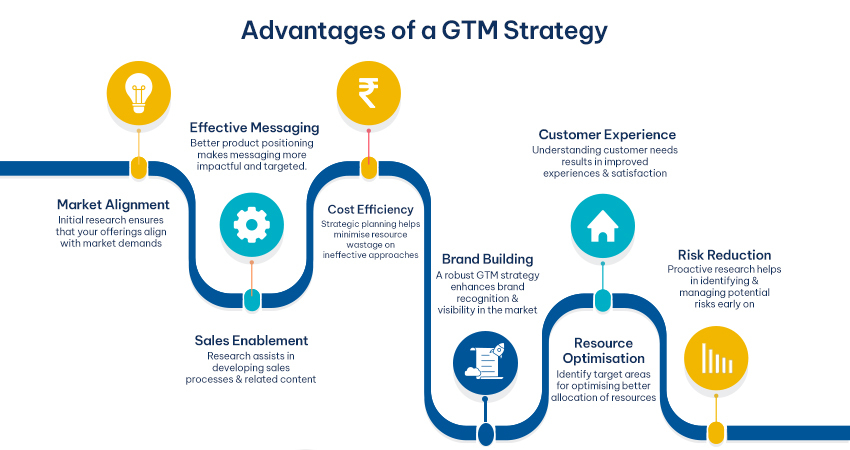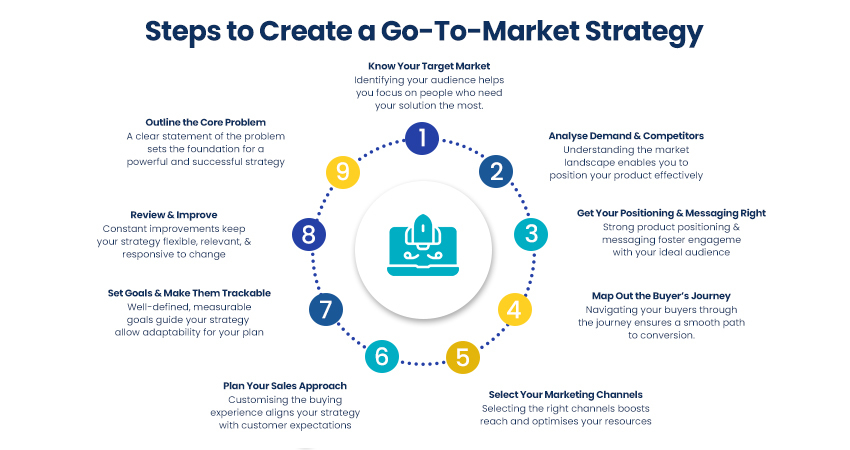
From Gut to GTM: Making Better Launch Decisions as a Consumer Brand
Every successful brand begins with a spark, such as a midnight idea, a shower thought, or that gut feeling that reflects you’re onto something big. It’s raw. It’s real. And honestly, it’s where the magic begins.
But here’s the catch: in today’s hyper-competitive market, instinct can be a powerful compass, but cannot be the only guide. What starts with a feeling needs the fuel of data, direction, and deliberate action. Gut instinct might light the fire, but it is data, strategy, and continuous learning that turn a promising idea into a successful launch.
So, how do you go from “I think this could work” to “We’ve built something that scales”?
Let’s dive into how smart consumer brands are transforming gut-driven ideas into grounded go-to-market (GTM) strategies built for sustainable growth.
1. The Reality Check: Understanding Launch Success Rates
It is to believe that a unique idea or an eye-catching product design will guarantee success. However, the numbers tell a sobering story:
| Metric | Statistic |
| Product Launch Failure Rate | 95% of newly launched products face failure |
| Products Reaching Market | Only 40% of developed products make it to market |
| Post-Launch Profitability | Among those that reach the market, only 60% generate revenue |
These statistics highlight a crucial truth showcasing intuition may initiate the journey, a successful launch demands structure, validation, and agility.
2. Moving from Assumptions to Validation
You might feel your product is needed, but does your audience agree? The answer lies in early validation. According to CB Insights, 42% of startups fail because they build products no one wants. This highlights the importance of testing ideas early, as many failures stem from not understanding the gap between an idea and a real problem. Here are some practical ways to validate before launch:
- Conduct 1:1 interviews with potential users to understand pain points and preferences firsthand.
- Run social media polls or email surveys to quickly collect feedback from a broader audience.
- Launch an MVP (Minimum Viable Product) or waitlist campaign to test traction without a full rollout.
- Use pre-launch sign-ups to gauge genuine interest and market appetite.
3. Building a GTM Roadmap That Feels Fluid Yet Firm
While each brand’s journey is unique, a flexible structure is vital. Here is a sample roadmap you can tailor to your product:
| Phase | Core Focus | Key Metric to Track |
| Discovery | Understand audience psyche | 30-50% positive survey responses |
| Validation | Prototype testing & segmentation | 25%+ engagement on pilots |
| Pre-Launch | Build buzz & lead capture | Growth in email/social signups |
| Launch Week | Conversion & purchase behaviour | Conversion rate vs baseline |
| Post-Launch | Feedback, loyalty, reviews | Repeat purchase & NPS score |
| Iteration | Learn, tweak, relaunch | Address the top 3 friction points |
Having this structure not only creates internal alignment but also helps set realistic expectations across marketing, product, and sales.
4. Listening Loops: Why Agility Beats Perfection
Many brands obsess over launching “perfectly,” but agility often wins. The Product Marketing Alliance found that 90% of brands adjust their messaging or product after launch. This underscores the importance of feedback loops. How can you embed them? Let’s see:
- Real-time analytics: Track funnel drop-offs, most-clicked features, and abandoned carts to spot friction.
- Social listening: Understand sentiment from reviews, DMs, and mentions across platforms to gauge emotional response.
- Micro-surveys: Pop-ups asking quick questions post-purchase can provide actionable insights fast.
Embedded loops like these let you adapt within days instead of months. Small changes in pricing, UX, or messaging can yield 25%+ improvement in retention and conversion.
5. Aligning with Today’s Values: Sustainability & Personalisation
Modern consumers care about more than just features. They care about values.
Recent findings revealed a clear shift in consumer mindset and show people no longer just look at what a product does, but also what it stands for:
- 48% are even willing to pay a premium for eco-friendly packaging, proving that good design today also means green design.
- 45% say they would willingly switch to a different brand if it offered better sustainability practices, turning ethical values into a serious competitive edge.
However, at the same time, personalisation plays a bigger role in shaping consumer decisions than ever before:
- 80% of consumers discover new products via social media, underlining the growing importance of targeted, relatable, and timely content.
- 83% rely heavily on reviews before making a purchase, showing that building trust through user feedback should start from day one.
These trends clearly show that today’s consumers are not merely purchasing products; they tend to connect with a brand’s purpose and personality. So, here are some actions that you can take:
- Highlight your sustainability practices across all marketing materials, from packaging to product pages, in order to align with the growing eco-conscious mindset.
- Encourage User-Generated Content (UGC) and authentic reviews early in the buyer journey to build trust and social proof from the outset.
Use audience segmentation to craft personalised launch emails, ads, or landing pages that speak directly to specific user needs, making every touchpoint feel relevant and intentional.

6. Embrace Technographics and Omnichannel Journeys
Understanding not just who your customers are but also how they behave digitally is a game-changer. Technographic segmentation, which means grouping customers based on device usage, tech adoption, and behaviour, can:
- Improve awareness by 40%, making initial outreach more effective.
- Cut cart abandonment by 50%, by tailoring offers based on platform usage.
- Boost repeat purchases by 33%, which helps drive lifetime value.
It is always advisable to pair this with omnichannel consistency, as brands with seamless offline and digital experiences retain 89% of customers, compared to just 33% with single-channel efforts.
7. Post-Launch Retention: The Real Growth Engine
Launching is a milestone, but not a finish line. Brands that invest in nurturing their community post-launch retain 30% more customers, according to research. To build on that early traction, here are a few impactful post-launch tactics your brand can put into action:
- Offer early adopters exclusive perks or content as a token of appreciation for their support.
- Deploy loyalty programs or tiered rewards to incentivise repeat purchases.
- Run monthly check-ins, email flows, and satisfaction surveys to keep users engaged.
- Spotlight user reviews and stories to build social proof and organic buzz.
8. The Cycle of Iteration: Launch, Learn, Level-Up
Structured and sound GTM planning increases the chances of a successful product launch by up to 50%. Here is a simplified cycle to ensure you do not just launch, but grow:
- Soft launch with a niche audience or region to test the waters with minimal risk.
- Measure real performance vs expected metrics to validate key assumptions.
- Adapt messaging, price, and feature set based on what you learn.
- Scale through broader campaigns once optimizations are in place.
- Revisit at 30/60/90-day intervals to improve continuously with fresh insights.
Final Thoughts: Combine Human Instinct with Data Discipline
Every great brand story begins with a gut feeling. But what truly sets successful brands apart is their ability to back that instinct with insight, structure, and the agility to evolve.
To sum it up:
- Let data refine your intuition, not replace it, so your decisions remain bold and grounded.
- Validate early, test often, and be ready to adapt quickly to avoid significant errors.
- Build for people first, and optimize through analytics to drive sustainable growth.
In short, trust your gut and give it the data it needs to thrive.

Source: https://amoeboids.com/blog/go-to-market-gtm-strategy-101/




